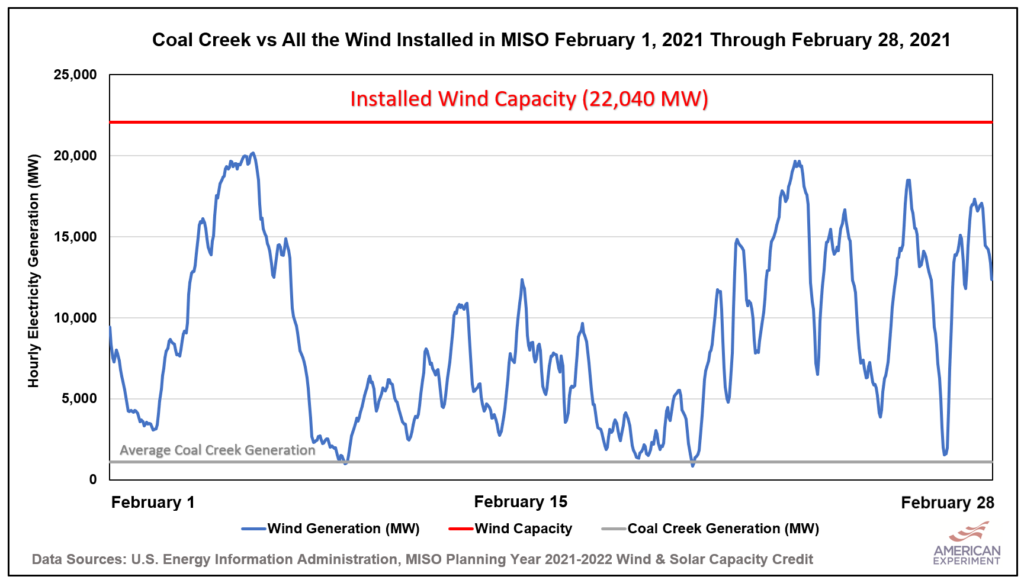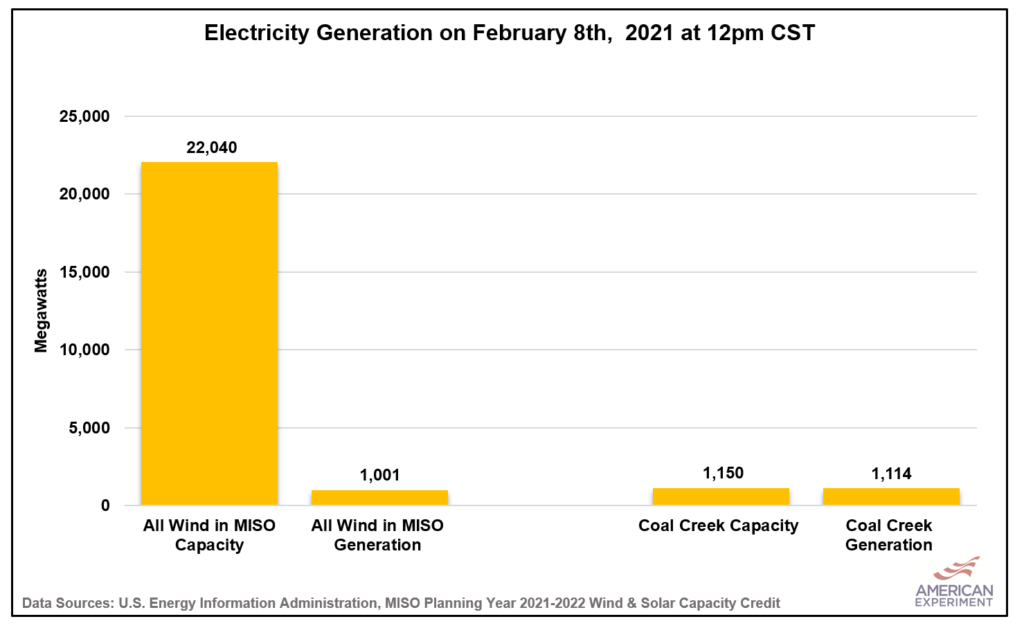Wind and solar lobby cries foul as Great River Energy tries something smart, for a change
Great River Energy (GRE), which provides electricity to many of Minnesota’s Rural Electric Co-ops, is attempting to upgrade its 170 megawatt (MW) natural gas peaking plant in Cambridge, Minnesota, so it can also burn diesel fuel in times of emergencies.
Upgrading the plant is a good idea because the Christmas blackouts that hit the Southeast United States during Winter Storm Elliot stemmed largely from natural gas pipeline interruptions, and having the option to burn diesel fuel at this facility during emergencies will reduce the risk of blackouts in Minnesota.
Unsurprisingly, wind and solar advocates oppose this commonsense measure arguing that GRE should instead build battery storage. This argument is a non-solution because lithium-ion batteries are 141 times more expensive than building liquefied natural gas storage, which is more expensive than storing diesel on site.
GRE should be applauded for wisely deciding that having dual fuel capabilities at the Cambridge plant will boost the reliability of their fleet and help the company avoid massive natural gas price spikes like those experienced during Winter Storm Uri in 2021.
However, we must not forget that one reason GRE is in this predicament is that it unwisely decided to sell the Coal Creek Station, a 1,151 MW coal plant in North Dakota, one of the most reliable, most affordable power plants in the country.
For example, during Winter Storm Uri, there were multiple hours when the Coal Creek Station generated more electricity than all of the wind turbines in the 15-state regional electric grid, the Midcontinent Independent Systems Operator combined.

This is truly incredible because, at the time, there were 22,040 MW of wind turbines installed on the grid, meaning there was 19 times more wind capacity than the 1,151 MW Coal Creek Station, but it generated less electricity.

GRE was lauded by wind and solar special interest groups when it announced it would shut down Coal Creek several years early, retiring one of the largest power plants in the Upper Midwest. Thankfully, Rainbow Energy bought the plant from GRE to keep this important power plant on the regional grid.
GRE also sought the approval of wind and solar advocacy groups when it announced its tiny 1.5 MW iron-air battery that loses 62 percent of the electricity generated on a round trip basis.
Despite all of this preening for wind and solar special interest groups, those groups are still opposing GRE’s commonsense attempt to shore up fuel supplies for their peaker plants during times of maximum grid stress, demonstrating that these groups do not care one iota about grid reliability.
Hopefully, GRE is beginning to understand that no amount of virtue signaling will satisfy these anti-electricity advocates and that the job of an electric utility is to do what is right for grid reliability and not simply what is politically popular at the moment.